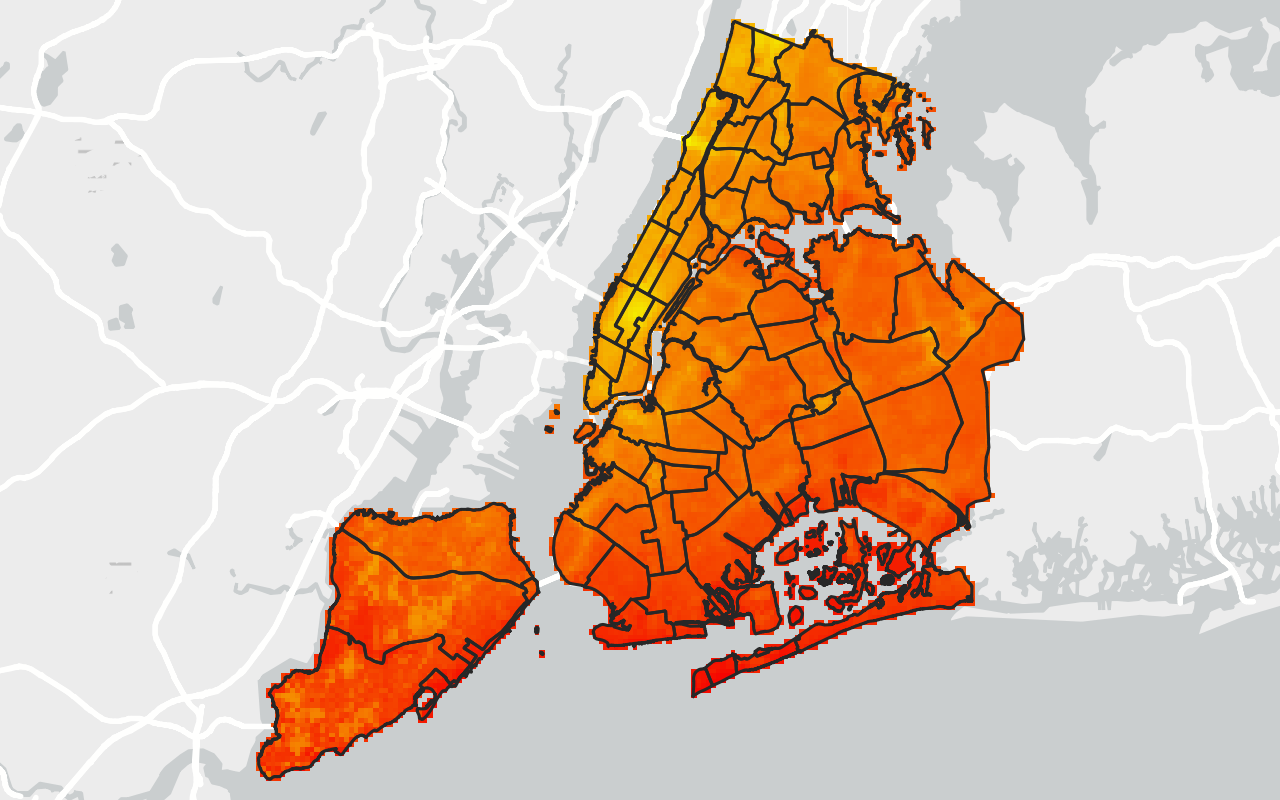Environmental Quality
All New Yorkers, regardless of race, disability status, age, or socioeconomic background, have a right to clean air, water, and land. Environmental justice communities in particular have long borne the brunt of pollution from industrial processes, heavy traffic, and environmental contamination, impacting health outcomes and quality of life. These indicators provide critical data about the quality of environmental conditions across New York City.
Air Quality
Air quality monitors provide critical information about air pollution across the City. Fine particulate matter (PM 2.5) consists of small airborne particles that can impact respiratory health. Nitrogen oxides (NOx) and ozone (O3) are gases produced from fuel combustion and motor vehicle exhaust. These pollutants effect people’s health in many ways, such as through lung and heart disease. Learn more about the impacts of air pollutants here.
Annual Average Fine Particulate Matter (PM2.5)
2024

Annual Average Nitric Oxide (NO)
2024

Annual Average Nitrogen Dioxide (NO2)
2024

Summer Average Ozone (O3)
2024

Annual Average Black Carbon (BC)
2024

Water
Drinking Water Quality
New York is known for the high quality of its drinking water supply, but many factors can impact the quality of water in certain areas. This map identifies key indicators from water quality sampling sites, including: chlorine and fluoride, which are residual chemicals from the treatment process; turbidity, which measures the relative clarity of water; and chloroform and E. coli, bacterial organisms that indicate potential contamination of parts of the water supply.
Lead Pipes
The City stopped installing new lead service lines in 1961 and banned lead solder for plumbing in 1987, but many lead lines remain in service today. Lead contamination can have effects on people of all ages, but exposure is especially dangerous for children and people who are pregnant. Lead is a neurotoxin that can cause cognitive issues, high blood pressure, or miscarriage. Common ways people can be exposed to lead is through lead paint, construction dust, or through lead water service pipes. You can use this map to see if your home has a lead service line.
Land
Chemical Bulk Storage Facility
This map shows the location of various chemical storage facilities across our city. Click a location to see what kind of chemicals are stored.
Brownfield Cleanup Sites
According to the EPA, “A brownfield is a property, the expansion, redevelopment, or reuse of which may be complicated by the presence or potential presence of a hazardous substance, pollutant, or contaminant.” You can use this map to see what brownfields are near you.